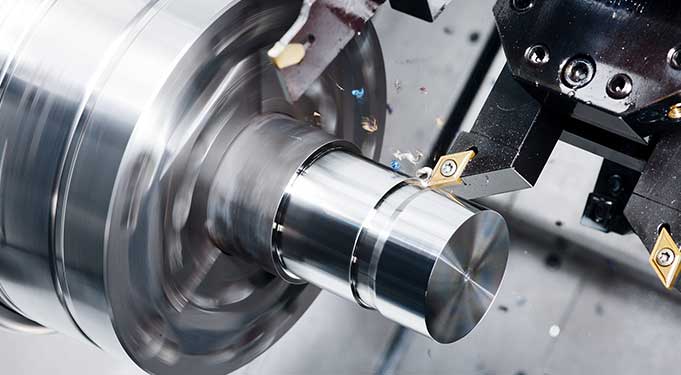Time to read: 6 min

Discover the nuances of turning operations in the machining industry, a time-tested method for precision and versatility. This article explores the fundamentals, materials, and the impact of turning operations on the creation of cylindrical components with various features.
Turning operations have been a cornerstone in the manufacturing sector for their ability to produce high-precision cylindrical shapes. This process involves the use of a lathe to rotate a workpiece while a cutting tool moves linearly to remove material. It can be performed manually or with the aid of a CNC machine, with the latter being the preferred choice for parts requiring high precision.
In the context of turning operations, the workpiece is subjected to rotation, and a cutting tool traverses along one to three axes to achieve precise diameters and depths. This process is not limited to external turning; it can also shape the inside of a cylinder, creating components with diverse geometries.
Components that have undergone turning operations are referred to as "turned parts" or "machined components". For an in-depth exploration of various machining processes, refer to our detailed guide.
The tools used in turning operations primarily consist of single-point cutting tools, designed to remove material from the rotating workpiece. The design of these tools is tailored to specific applications, and the CNC turning process utilizes CNC-enabled lathes or turning machines. The types of lathes used in turning operations include turret lathes, engine lathes, and special-purpose lathes, which can be either manual or CNC.
Materials for turning operations are predominantly metals, such as alloy steel, carbon steel, cast iron, stainless steel, aluminum, copper, magnesium, and zinc. However, the versatility of the process extends to plastics and other materials like ceramics, composites, thermoplastics, and thermosets.
The turning process functions by moving the cutting tool linearly along the surface of the rotating workpiece, removing material around the circumference to achieve the desired diameter. This process is capable of creating cylindrical parts with both external and internal features, including slots, tapers, and threads.
CNC turning, as depicted in the image, is a sophisticated process that allows for the creation of complex parts with high precision. Products made with turning operations are often rotational and axi-symmetric, featuring holes, grooves, threads, tapers, various diameter steps, and even contoured surfaces. Components fabricated entirely through turning operations typically include custom-designed shafts and fasteners, especially for prototypes and limited quantities.
Turning operations are also employed as a secondary process to enhance or refine features on parts manufactured using alternative methods. Examples of products crafted with turning operations include camshafts, crankshafts, baseball bats, bowls, cue sticks, signboards, musical instruments, and furniture legs.
The types of turning processes are diverse, including straight turning (cylindrical turning), taper turning, spherical generation, grooving, parting, knurling, and threading. Each of these processes serves a specific purpose in the creation of precise and detailed components.
Greg Paulsen, Director of Applications Engineering, remarks, "Turning parts in a lathe is one of the oldest forms of manufacturing high precision components. You can control varying and tight tolerances as long as your features are on axis to each other."
Advantages of Turning Operations:
- Material Flexibility: Turning operations are not limited to metals; they can be applied to a wide range of materials, including wood and plastics.
- High Tolerances: The process is capable of producing parts with extremely tight tolerances, making it ideal for adding precision rotational features to parts formed through other methods.
- Short Lead Times: Due to the speed of the turning process, lead times are significantly reduced.
- Operator Skill Requirements: Turning operations do not necessitate a highly skilled operator, as machinists can be trained and certified through industrial training programs.
- Adjustable Material Removal Rate: The rate at which material is removed can be adjusted depending on the material and desired outcome.
Disadvantages of Turning Operations:
- Limited to Rotatable Components: The nature of turning operations restricts them to components that can be rotated, limiting the size of parts that can be created.
- Multi-Procedure and Machine Requirement: Turning operations are often just one step in the creation of a part, necessitating the use of additional machines and processes.
- High Equipment Costs: Turning machines, especially CNC ones, can be costly, and additional fittings and attachments add to the expense.
- Significant Tool Wear: The repetitive nature of turning operations leads to considerable wear on cutting tools.
- Scrap Generation: Like other machining processes, turning operations generate scrap metal, known as chips or turnings.
Summary: This article has shed light on the turning operations in machining, highlighting their applications, advantages, and disadvantages. For further insights into turning operations and other machining processes, reach out to a Unofactory representative.
Unofactory offers a broad spectrum of manufacturing capabilities, including CNC machining and additional services for prototyping and production needs. Visit our website to discover more or request a complimentary, no-obligation quote.




